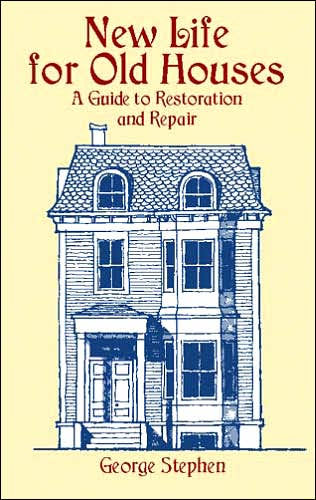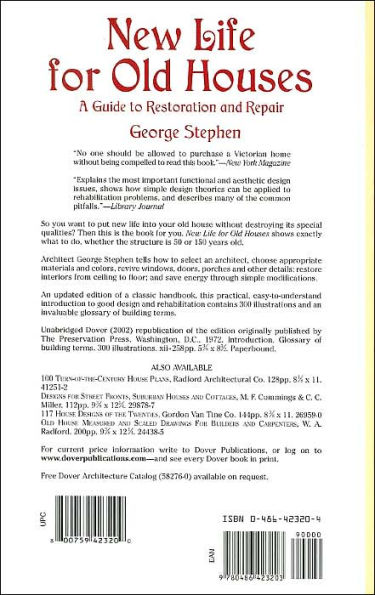"Explains the most important functional and aesthetic design issues, shows how simple design theories can be applied to rehabilitation problems, and describes many of the common pitfalls." — Library Journal.
So you want to put new life into your old house without destroying its special qualities? Then this is the book for you. New Life for Old Houses shows exactly what to do, whether the structure is 50 or 150 years old.
Architect George Stephen tells how to select an architect, choose appropriate materials and colors, revive windows, doors, porches, and other details; restore interiors from ceiling to floor; and save energy through simple modifications. An updated edition of a classic handbook, this practical, easy-to-understand introduction to good design and rehabilitation contains 300 illustrations and a valuable glossary of building terms.
"Explains the most important functional and aesthetic design issues, shows how simple design theories can be applied to rehabilitation problems, and describes many of the common pitfalls." — Library Journal.
So you want to put new life into your old house without destroying its special qualities? Then this is the book for you. New Life for Old Houses shows exactly what to do, whether the structure is 50 or 150 years old.
Architect George Stephen tells how to select an architect, choose appropriate materials and colors, revive windows, doors, porches, and other details; restore interiors from ceiling to floor; and save energy through simple modifications. An updated edition of a classic handbook, this practical, easy-to-understand introduction to good design and rehabilitation contains 300 illustrations and a valuable glossary of building terms.

New Life for Old Houses: A Guide to Restoration and Repair
272
New Life for Old Houses: A Guide to Restoration and Repair
272
Product Details
| ISBN-13: | 9780486423203 |
|---|---|
| Publisher: | Dover Publications |
| Publication date: | 12/09/2002 |
| Pages: | 272 |
| Product dimensions: | 5.50(w) x 8.64(h) x 0.63(d) |



